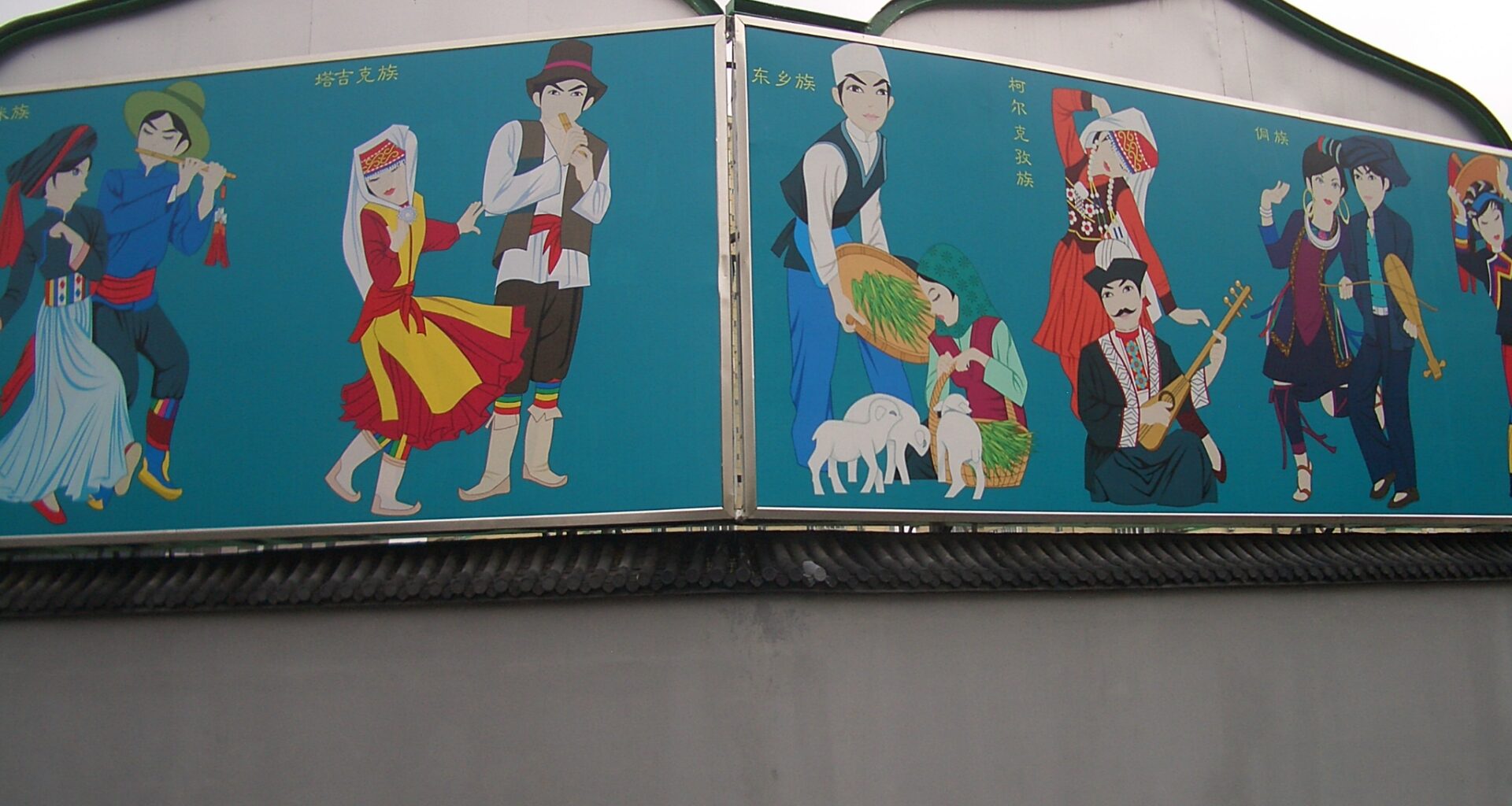
‘Critical Social Justice’ ideology has experienced a meteoric rise in mainstream American culture in the last four years. A less well-known aspect of this ideology is the use of the word ‘assimilationist’ as a term of abuse. Popularised by the critical anti-racism guru Ibram X. Kendi, an assimilationist is ‘one who expresses the racist idea that a racial group is culturally or behaviorally inferior, believing that a racial group can be changed for the better by acting like another racial group.’ In his most popular work, How to Be an Anti-Racist, Kendi explains that ‘assimilationist ideas and segregationist ideas are the two types of racist ideas, the duel within racist thought…the history of the racialized world is a three way fight between assimilationists, segregationists, and antiracists.’ The United States, in Kendi’s estimation, has been a racist nation—either segregationist or assimilationist—for its entire history, up to and including the present day.
Kendi’s choice to single out America as the country to criticise for being ‘assimilationist’ is profoundly misdirected. Far from being a type of racism in America, the ideal of assimilation has historically served as an antibody to the nativist elements that have long been part of our country. Nativists believed that only White Anglo-Saxon Protestants (WASPs) were fit to be Americans, and that to be an American one needed to have the right (WASP) ancestry. For advocates of the assimilation ideal, on the other hand, America was not a country based on blood and soil, but a new type of nation, one based on adherence to a set of liberal principles and values, which people from all over the world could come to and become full American citizens. ‘It has been our fate as a nation,’ Richard Hofstadter once wrote, ‘not to have ideologies but to be one.’ Aside from during a handful of aberrant and short-lived periods, such as World War I, the advocates of assimilation have defined the American ethos and public policy for most of our history, and this is because their views are clearly reflected in the liberal ideas upon which the nation was founded.
Far from being a type of racism in America, the ideal of assimilation has historically served as an antibody to the nativist elements that have long been part of our country.
There are of course many examples of the United States’ failing to live up to the assimilation ideal, the most ignoble of which is America’s historical failure to apply this ideal to African Americans. As Nathan Glazer points out in his book We Are All Multiculturalists Now, earlier in our history, even the most liberal figures promoting the assimilation ideal would typically exclude blacks from the picture, as if it were a foregone conclusion that assimilation in their case was hopeless. But even this significant omission was corrected in the mid-twentieth century: as Glazer writes of African Americans, ‘the best-informed, most liberal, and most sympathetic analysts of the ethnic and racial scene in the 1930s and ’40s saw assimilation as a desirable consequence of the reduction of prejudice and discrimination.’ This attitude continued until the 1960s, when for the first time some segments of the progressive left began to reject the assimilation ideal. Today, unfortunately, too many on the left reject assimilation, as at best outdated, while many—like Kendi—conceive of it as inherently racist.
Kendi is also wrong to suggest that assimilation required immigrants to reject their native cultural or ethnic identity. Robert Park, a University of Chicago scholar who is widely regarded as the father of sociology, and his colleague E.W. Burgess, were the first (in 1921) to define assimilation as ‘a process of interpenetration and fusion in which persons and groups acquire the memory, sentiments, and attitudes of other persons and groups and, by sharing their experience and history, are incorporated with them in a common historical life.’ Thus assimilation was not originally seen to require new immigrants to disavow their ethnic and cultural identity. As Peter D. Salins explains in his book Assimilation, American Style, the project of assimilation in America ‘depended on accommodations by both ‘natives’ and immigrants. Natives had to accept that they were living in a society that was in constant demographic and cultural flux. Immigrants had to learn a new language, adapt to an alien culture, and live by their adopted country’s rules.’
In short, the claim made by Kendi that America is an assimilationist country in his definition of the term is incorrect in an important way. It mischaracterises the concept of assimilation: far from being a byword for white supremacy, the assimilation ideal was promoted by the real anti-racists throughout American history to discredit the nativist argument that only WASPs could be true Americans. Take, for example, these lines from Ralph Waldo Emerson, written in 1845 (and quoted by Glazer):
‘In this continent – asylum of all nations – the energy of Irish, Germans, Swedes, Poles, and Cossacks, and all the European tribes – of the Africans and of the Polynesians – will construct a new race, a new religion, a new state, a new literature, which will be as vigorous as the new Europe which came out of the smelting-pot of the Dark Ages.’
‘…a new race, a new religion, a new state, a new literature, which will be as vigorous as the new Europe which came out of the smelting-pot of the Dark Ages.’ (Emerson)
Despite being an inaccurate description of America, ‘assimilationism’ as Kendi defines it could still be a useful concept in other contexts. In fact, Kendian assimilationism turns out to be a strikingly accurate characterisation of another country in the world today. And not just any country, but the primary threat to the United States’ role as a global superpower and a genuine threat to the liberal world order: the People’s Republic of China.
The official policy of the Chinese Communist Party (CCP) is to formally recognise all 55 of China’s ‘minority nationalities’ as all being part of the same Chinese national family, together with the Han, the largest and dominant ethnic group; collectively they are known as the Zhonghua Minzu or ‘Chinese nation’. Some of the minority groups—such as the Uyghurs, Tibetans, and Mongolians—even have their own ‘autonomous regions’, and other minority groups have smaller autonomous prefectures. But in reality, ethnic and racial minorities in China are in no way ‘autonomous’, and some are subjected to the most draconian ‘assimilationist’ tactics anywhere in the world today.
China’s assimilationist policies vary depending on how racially and culturally different a particular ethnic group is deemed to be from the Han majority. Ethnic minorities like the Zhuang, which are mostly concentrated near the border with Vietnam, are subjected to minimal assimilationist pressures because of their cultural and ethnic proximity to the Han majority, and because many Zhuang already identify as Han Chinese. Groups like the Mongolians and Tibetans, each of which have their own autonomous region, have faced much harsher practices from Party authorities. In both regions, authorities are attempting to eliminate the native language from schools, and in Tibet sacred monasteries are regularly destroyed and innocent social and cultural groups are banned.
In the last ten years, the CCP has instituted a host of appalling policies geared towards forcibly and rapidly assimilating the Uyghurs.
The CCP believes that the ethnic groups that are most racially and culturally dissimilar from the Han—Uyghurs and the other Turkic groups in Xinjiang—are either impossible to assimilate, or that the only chance to assimilate them is through totalitarian means. Both of these beliefs have inspired Party policies in Xinjiang since 2017, when the CCP began the ongoing crackdown in Xinjiang that has been plausibly called a genocide.
In the last ten years, the CCP has instituted a host of appalling policies geared towards forcibly and rapidly assimilating the Uyghurs. These policies include rounding up millions of Uyghurs and other Turkic minorities in ‘re-education camps’ where they are forced to convert to the Han majority culture and support the CCP’s politics. Detainees who resist have reportedly been subjected to torture, rape and even death.
Outside of the camps, the CCP has established in Xinjiang the most pervasive surveillance state on earth, where any genuine displays of Uyghur culture or Islamic religion are effectively outlawed. Mosques have either been demolished, fitted with razor-wire and police desks, or converted into tourist attractions—all of which I witnessed myself when I travelled to Xinjiang during the summer of 2019. A Uyghur being found to possess a Quran, looking up a Quran verse online, or growing a beard—and even completely innocuous behaviours like not using enough electricity, exiting one’s house through the back door too often, or not using one’s mobile phone enough—are grounds for being sent for ‘re-education’. Uyghurs have often been forced to eat pork and drink alcohol—both considered haram in Islam—to prove themselves sufficiently assimilated to Han culture.
Meanwhile, the CCP is also preparing for the possible failure of its totalitarian assimilation tactics by attempting to drastically reduce the Uyghur population in the region.
Meanwhile, the CCP is also preparing for the possible failure of its totalitarian assimilation tactics by attempting to drastically reduce the Uyghur population in the region. The most disturbing policies the CCP has implemented in pursuit of this goal are the systematic forced sterilisation of Uyghur women, and the separation of Uyghur children from their parents to be raised in state-run ‘boarding schools’, where they are subjected to much of the same assimilationist indoctrination that their parents endure in the re-education camps. Additionally, the CCP is attempting to disperse the existing Uyghur population throughout China by way of its ‘work relocation’ programs, in which Uyghurs, often former inmates of re-education centres are forcibly sent to work in factories throughout mainland China for little to no pay. If the totalitarian assimilation policies do not work, the CCP will quietly continue removing the Turkic population from Xinjiang until it reaches whatever the Party deems to be an acceptable level.
Assimilation, in its original conception, is a quintessentially liberal idea. It is, at root, the antithesis of doctrines of racial or ethnic supremacy, and the most durable way to build a healthy, diverse, liberal democracy. Unfortunately, many on the political left in America today misunderstand the assimilation ideal to be a tool of ethnocentrism rather than an antidote to it. If they would only look to the starkly different approaches in countries like China, where assimilation really does mean the brutal—and even genocidal—forced conversion of ethnic minorities to the majority culture, they might realise how truly progressive the American assimilation ideal is.









Your email address will not be published. Comments are subject to our Community Guidelines. Required fields are marked *
Donate